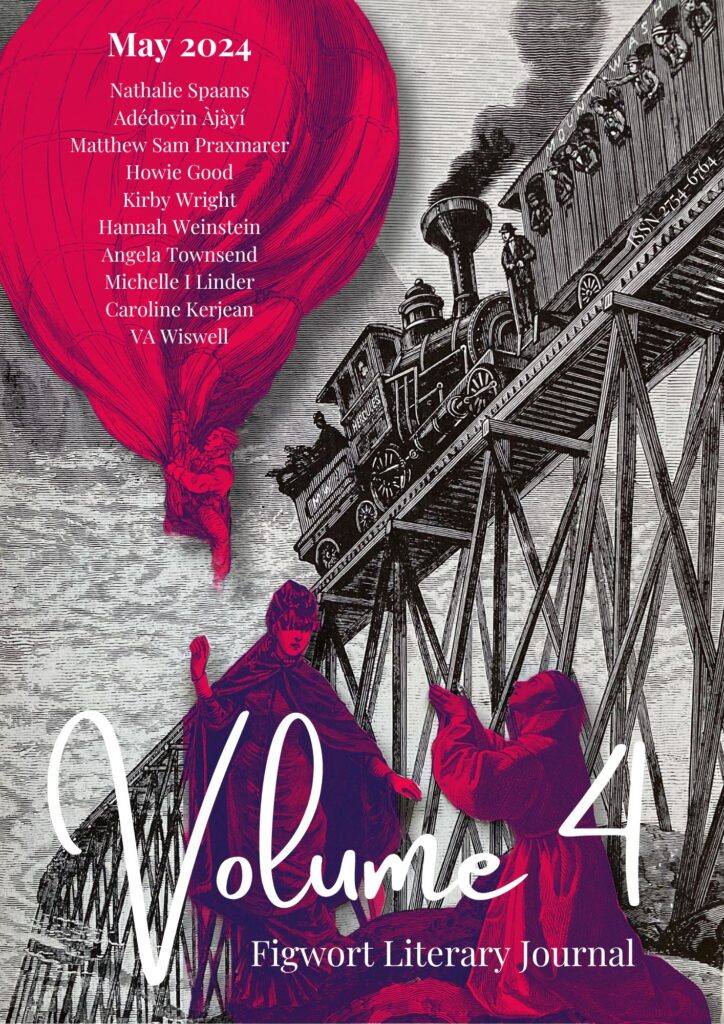Snowe on the Heart
‘Snowe on the Heart’ by Caroline Kerjean
After a great many preparations and complicated logistics, I arrive in the French capital in early fall. I don’t know a soul. The city feels even icier in the autumn than the Canadian winters so familiar to me. It is a chill which I’ll always remember. It goes straight through the bones.
I look out of the window of the small room I am renting, out over the slate-grey roofs of Paris, and I am struck by the greyness of everything.
‘All at once my position rose on me like a ghost. Anomalous; desolate, almost blank of hope, it stood. What was I doing here alone in great London? What should I do on the morrow? What prospects had I in life? What friends had I on earth? Whence did I come? Whither should I go? What should l do? I wet the pillow, my arms, and my hair with rushing tears…’[1]
The passage is from Villette, by Charlotte Brontë. It’s from a chapter titled ‘Turning a New Leaf’, which recounts the arrival in London of a young Lucy Snowe. In the wake of homegrown tragedy, she hopes to leave behind the past and start anew. Lucy Snowe feels just as desolate, as bereft as I do.
But I have found one antidote, here, to my loneliness and actual terror. It was while scrolling through Instagram one day, years later, that I stumbled upon a few images that brought my life situation, at the time, back to me in vivid if rather dark colours.
In one photo, a beautiful, brooding castle boasting towers and turrets. The château de Beaucresson, the caption read, had at least two towers dating back to the 15th century. Converted into a bed and breakfast today, it yet stood as an important witness to the history of Poitou-Charentes, where my old friend Séverine now lived. The image reminded me that the ‘antidote’ to my ghostly existence in Paris had been Séverine.
I had met Séverine years earlier, as a girl, in Québec. We had become fast friends. Hunkered down in Paris, many miles from where she now lived, I clung to the comfort of time spent with her away from the city. That much I remembered, as I sifted through the images in the château’s online gallery: a porcelain cup sitting on a table, statues dripping with moss, the woods outlined against lowering autumn skies…
The bois at the Château de Beaucresson awakened a long-ago feeling that autumn in the French countryside was, for me, so much more beautiful than autumn in Paris. Gazing at the photo, like a great river, memories rush back. Memories of one autumnal afternoon, in particular.
As Séverine and I stroll through the naked woods surrounding her house in neighbouring Poitiers, we chat, we laugh, we share memories and impressions and amusing little stories about our new professors, our families. What a comfort it is to have a friend! The fall sky is low and moody today, but its greyness does not affect me here in the same way it does in Paris. Its moodiness, here, is not steel-grey, but soft.
The slanting, wise autumn light promises to teach us things even our professors cannot. Slowly, hesitantly, Séverine begins to talk about her father. I am taken aback, as she rarely mentions him. He died in a road accident many years before.
—I took up law in part to honour his memory.
—I know, and I’m sure he would be proud.
Antoine had been a brilliant lawyer and historian. As we walk under the canopy of darkened trees, I wonder if I was not at least partly inspired to study history because of him. As a child, he had seemed remote, in the same way that a country called France seemed remote. Later, as a teenager, I had wanted to chat with him about my budding interest in history, but something about his formal demeanour discouraged it. As I tried to navigate, years later, French bureaucracy and the university system, I would come to miss him bitterly and could only imagine how much Séverine missed his counsel as well.
The time and distance that separate us seem a perfect symbol of those stretching out between North America and Europe, the New World and the Old. Though the impact of globalisation has been cultural uniformisation, there still exists a stark difference between the North American way of viewing its place in history, and the European idea of it.
Back home, the destruction of the Indigenous ways of life and history resulted, I believed, in an absence of culture. Mass consumerism had filled this void. I had always suffered from this absence of culture, of beauty, in my native land. One could say that the beauty of the natural landscapes made up for it and that was true to some extent. But not entirely, as we had defaced these landscapes as well. Our lack of aesthetic sensibility was, I strongly felt, a result of that great failing.
‘I have come to feel that there is here in North America a hidden place obscured by what we have built upon it, and that whenever we penetrate the surface of the life around us that place and its spirit can be found,’[2] observes one author.
As I reflected on the time spent in France, all those years ago, and on the rather tragic events which would unfold between myself and a certain professor, it occurred to me that my sojourn abroad had since come to symbolise a hard-earned life lesson about where, exactly, that ‘place and its spirit’ live. About how to connect with this North American place authentically and generously and, through it, with our living and ancient history. I gazed at the photo of the woods embracing the château de Beaucresson. It haunted me, made me travel back in time to that lovely afternoon with Séverine.
A stiff breeze stirs up, with a touch of winter in it. Down the road, a little way off: an early medieval church, its narrow windows glinting in the midday sun. Though we are near the village, there is complete stillness. We listen to the quiet. It is the silence of a myriad past lives. A constellation of lost histories. It is the silence of transcendence.
Somehow, I feel as though I have found the centre of the soul. As if the whole of existence has been revealed to me in an instant. My search for meaning answered in one flickering moment. Standing outside of time and place, I feel serene, grounded, whole.
Haunted, back in Paris and just like Brontë’s heroine, by a desolate loneliness, by ‘snowe on the heart’, my visits to my old friend continued to ground me when I needed it most. My experience of the campagne made me understand the actual reasons I had travelled so far to study history in the first place.
I had travelled this far to touch the past. To experience a truth which, until then, I could not discern at home. I had travelled this far to touch the spirit of place inscribed in its agelessness. A sense of time suspended: this was our hidden home. Yours, mine. That which generously allows our sensibility to gently touch a soul community, a spiritual commons.
I store away this feeling as I travel back to the capital to pursue my studies. In the weeks and months to come, amidst the hell of heartache and the heaven of friendship, I will feel just a bit more secure, warmed by the knowledge that Séverine and the dark woods of Beaucresson will always welcome me back.
[1] Brontë, Charlotte, Villette. New York: Random House, 2009, p. 57.
[2] John Haines, as quoted by Douglas E. Christie in The Blue Sapphire of the Mind: Notes for a Contemplative Ecology, Oxford University Press, 2013, p. 183.
Caroline Kerjean is a Quebec City-based author, artist and designer. She fell in love with art and culture at a young age and, after a life-changing experience restoring two medieval castles in France’s beautiful Alsace region, enrolled in art history at the Sorbonne. After returning to Canada, she worked in the museum sector, and published a book as well as various essays. Kerjean now devotes herself full-time to her creative practices, aiming to pursue a rich and meaningful dialogue between past and present, one which evokes the weaving of a tapestry, an art form the author holds dear. You may find her at www.athreadofhistory.com.



